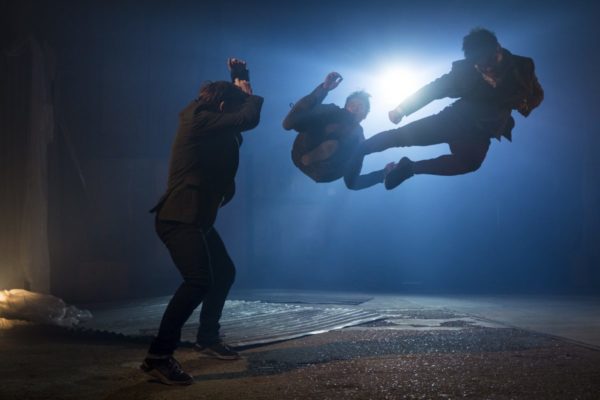
There’s something for everyone in writer/director Marc Price’s 2018 independent action comedy, Nightshooters.
[Read more…]The curated portfolio of film journalist Joe Lipsett
by Joe Lipsett

There’s something for everyone in writer/director Marc Price’s 2018 independent action comedy, Nightshooters.
[Read more…]by Joe Lipsett
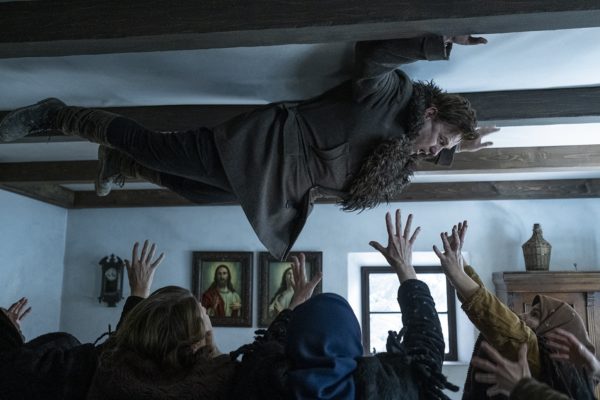
Post Mortem (2020), Hungary’s submission for the Best Foreign Language Oscar, is a visual spectacle about a small town caught in the throes of ghostly attacks.
[Read more…]by Joe Lipsett
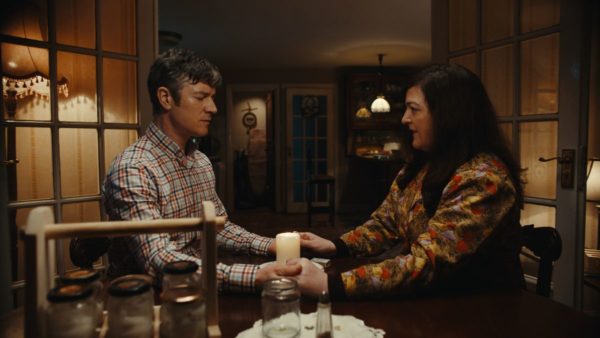
In He Said/She Said, critics Joe and Valeska dissect a film in a back and forth exchange. Previously, we tackled the very silly, albeit enjoyable Countdown, which was the definition of mindless youth horror.
This time, we’re aiming for some dry, sardonic wit with Mike Ahern & Enda Loughman’s Irish ghost comedy Extra Ordinary.
Spoilers follow… [Read more…]
by Joe Lipsett
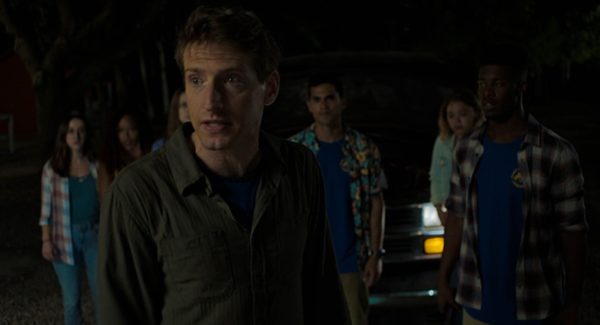
While Kevin Williamson and Wes Craven certainly didn’t invent the self-referential horror film, due to its pop culture footprint Scream has become a natural point of comparison for every post-1996 metatextual horror film. More than twenty years ago Sidney Prescott and Ghostface grossed $100M+ and, in the process, redefined the way that audiences — and filmmakers — considered how horror films are constructed. The proliferation of self-aware horror films in the 00s and 10s reflects this change (for better or worse) as it is now considered fair game to have characters acknowledge their predicament with a knowing wink to the audience, even while they run around screaming and dying.
Enter Brett Simmons‘ new horror-comedy, You Might Be The Killer, a film that gleefully comments on the tropes of the first cycle of 80s slasher films, even as it aims to replicate them, all while adopting an intriguing non-linear narrative structure that jumps back and forth in time. Although the film fails to stand on its own two feet by offering something new and unexpected, writers Simmons, Thomas P. Vitale and Covis Berzoyne do a good job of constructing a film that honours the conventions of the subgenre while simultaneously referencing and abiding by them.
You Might Be The Killer begins in media res as camp director Sam (Fran Kranz) calls his best friend Chuck (Alyson Hannigan) in the middle of a massacre. He quickly explains that the majority of the camp counsellors have been murdered by a bone-machete wielding masked man and that he has barricaded himself inside a cabin in the hopes of staying alive. Chuck is a video store employee and Sam’s go-to horror movie expert so he enlists her help in figuring out how best to survive. Thus begins a loose sort of bracketing device in which Chuck asks Sam questions to uncover the events that unfolded, which prompts the narrative to double back on itself (often using a title card indicating the number of dead counsellors to help audiences keep track of the timeline).
Although the film initially plays up the mystery of the killer’s identity, the film’s title a dead giveaway as to who is responsible. After a brief period, Simmons, Vitale and Berzoyne lay their cards on the table and acknowledge that Sam has been murdering his employees in a kind of fugue state; at this point the focus of You Might Be The Killer shifts from the mystery of “who” is the killer to the “why” the murders are happening, as well as “how” Sam can survive his situation. Throughout this process, Chuck reiterates the rules of the slasher genre according to its most popular entries (all while impressively manning the register and sassing customers who eavesdrop of the phone call).
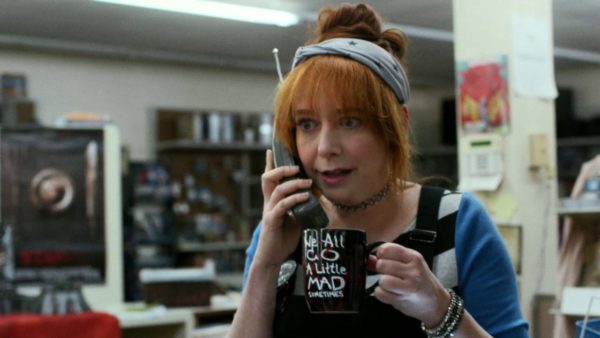
Despite its meta elements, I would argue that the closest comparable film is not Scream, but 2015’s The Final Girls. Both films gently mock and play with the conventions of the slasher film while stringently adhering to them. Admittedly The Final Girls has a great deal more heart (and gender politics) working in its favour, but both films are fun, spirited endeavours that have a breezy vibe to them, thanks to a winsome cast.
The success of You Might Be The Killer is 100% thanks to Kranz and Hannigan. The two actors bring a great deal of audience goodwill from their various Joss Whedon projects to the production and their warm, empathetic screen presence helps engender audience investment. Even after it is revealed that Sam is the killer, Kranz manages to make him sympathetic and likeable. Hannigan arguably has the more challenging role of the two, given that she is divorced from all of the action; even stranded in a single video store set and forced to act all of her scenes on the phone, she’s a sheer delight. She infuses Chuck’s know-it-all, chipper, informative exposition with charm, easily making Chuck one of the highlights of the film.
Alas, despite the two strong performances anchoring the film, You Might Be The Killer peters out around the one hour mark. After a while it becomes clear that the film is using the self-referential material to prop itself up, and doesn’t have much else to offer. Little work is done to invest the other counsellors with distinct personalities, so watching the nearly dozen murders proves to be a rote exercise (even if the gore and the direction is ably and enthusiastically executed).
Ultimately You Might Be The Killers overstays its welcome and sputters to a (foregone) conclusion that relies too much on unearned audience investment in secondary characters who are little more than types. No matter how amusing the callbacks to 80s slashers are or how strong the two lead performances are, You Might Be The Killer still winds up feeling a little empty.
3.5/5
by Joe Lipsett

There’s something classic about a good old fashioned creature feature, particularly one that doesn’t involve some kind of mutation or require a natural weather phenomenon. In the wake of a glut of made-for-TV films, writer/director Dick Maas aims to resuscitate the subgenre with his 2016 film Prey (Prooi in its original Dutch) by infusing a sense of delirious fun with graphic carnage.
Set in the beautiful Dutch capital of Amsterdam, Prey concerns a large, carnivorous lion that is on the loose and liberally chowing down on people. The film’s cold open quickly and efficiently establishes the premise with the mysterious deaths of an entire family in their secluded house just outside of the city. Included in the death toll: a young girl, whose body is discovered some distance away after being dragged and partially eaten in a field. The ruthlessness of both the film and its central monster is telling; Maas, Prey and the lion kill characters indiscriminately, regardless of their sex, profession or age. In fact the film’s willingness to kill not just one, but several children over its 1 hour and 50 minute runtime alone makes it worthy of recommendation. If only North American horror films were so liberal with their child murder.
Following the initial attack, Prey introduces veterinarian Lizzy (Sophie van Winden). Maas scripts Lizzy’s first scene in a very telling fashion: she is seen sticking her hand into the stomach of a sedated crocodile while fending off sexual advances by her on-again, off-again boyfriend, cameraman and philanderer Dave (Julian Looman). Lizzy’s ability to keep calm and collected in tense and stressful circumstances – human and animal-related – serves her well throughout the film. (By comparison, her physical likeness to Naomi Watts alternates between endearing and distracting).
Lizzy is pulled into the investigation by Olaf Brinkers (Rienus Krul) because of her experience working not only with animals, but more specifically lions. Together they come up with a plan to help the police deal with the rapidly escalating attacks; plans which are derailed by Dave and reporter Maarten (Pieter Derks)’s press coverage, as well as by an inept and nepotistic police Chief. Eventually Lizzy’s ex, a skilled British hunter named Jack (Mark Frost), is also called in to help stop the creature.
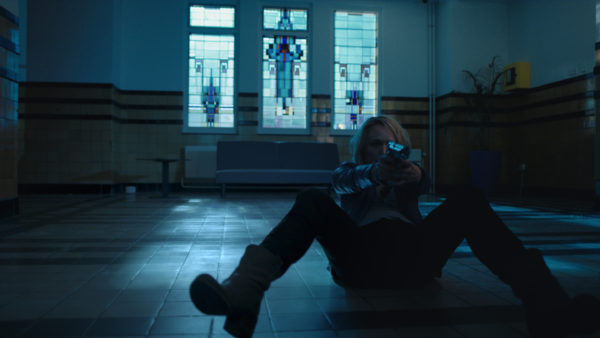
Prey doesn’t suffer from a particularly complicated plot. More often than not Maas knows how to balance his audacious attack scenes and his lighthearted, verging on rude comedy. This frequently works best when the latter is mixed into the former such as the scenes set at a golf course, on a very public tram and a children’s playground (all of which are standouts).
Unfortunately Maas also dedicates an egregious amount of time to Lizzy and Dave’s troubled relationship, which becomes even more complicated (but not more interesting) when Jack arrives on the scene. Lizzy is a headstrong, intelligent protagonist, but her “will they, won’t they” relationship with Dave and Jack is easily the film’s least interesting subplot. Every time Prey cuts to a scene where they discuss their personal affairs, it’s the cinematic equivalent of pumping the brakes. One gets the sense that Maas is concerned that without the personal plot line the film will be too slight (which may very well be true), but the alternative is a bloated film belaboured with pacing issues.
Thankfully there is enough gore, violence and laughs to sustain audiences through the plodding dramatic scenes. One particularly memorable sequence occurs well past the halfway point of the film and introduces an entirely new character that is a delightful hoot. Seizing on Lizzy’s recommendation that a hunter be hired, the Chief of police mistakenly calls upon his narcissistic cousin (accompanied by his twittering idiot nephew) to set a trap in the city’s famed Vondel Park. What happens to the pair is telegraphed early and is unsurprising in that regard, but the result is so well executed that the entire subplot winds up being both wildly entertaining and hilarious.
One of Prey‘s greatest strengths is that Maas knows how to write and shoot action sequences. The attack sequences are never difficult to follow and Maas frequently adopts a point of view that suggests violence using sprays of blood and gory aftermaths. In this capacity, the attacks are more tense that terrifying and the aftermath makes frequent (and comedic) use of body parts. These practical make-up and prop effects are much more effective than the beast at the center of the chaos; sadly whenever the lion is seen for more than a few seconds it is exclusively in unconvincing CGI.
Poor digital effects and a plodding love triangle storyline aside, Prey is a highly entertaining film. Dick Maas has created a creature feature that is unashamedly full of dumb moments, offensive gore and rude comedy and it’s damn delightful. What more can you ask for from a giant lion flick?
3.5/5
by Joe Lipsett
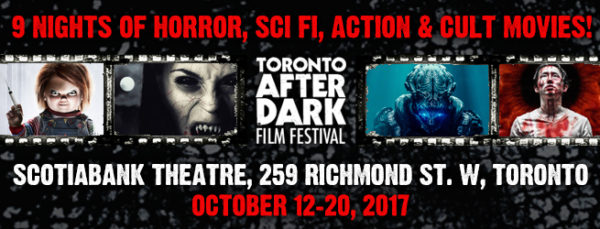
I’ve been spending a lot of time thinking about a pair of films – Rabbit and The Endless – both of which screened at the 2017 Toronto After Dark Film Festival (Oct 17-22). Plus: a brief endorsement for the ridiculous hilarity of Cult of Chucky.
Let’s bitch it out… [Read more…]